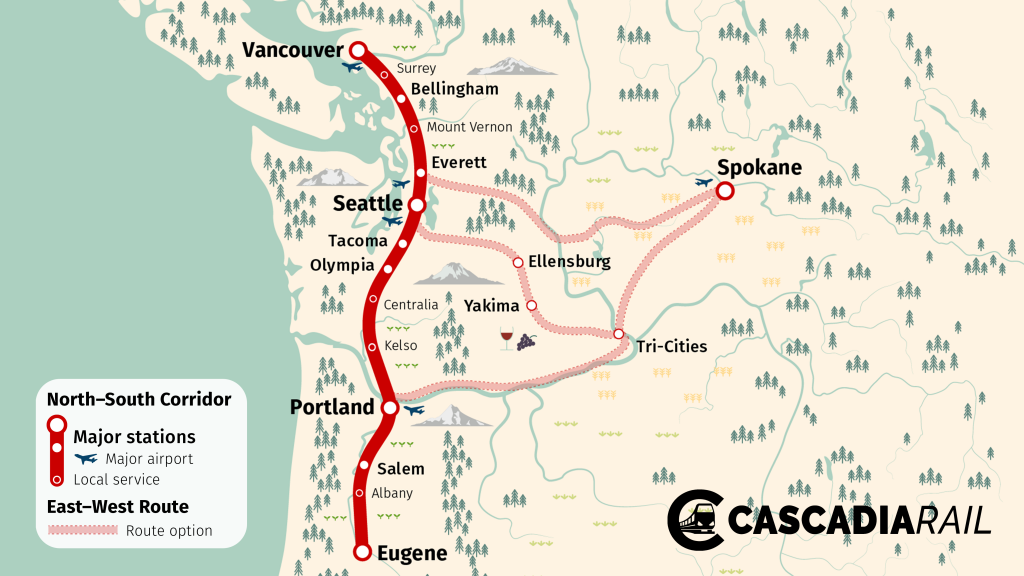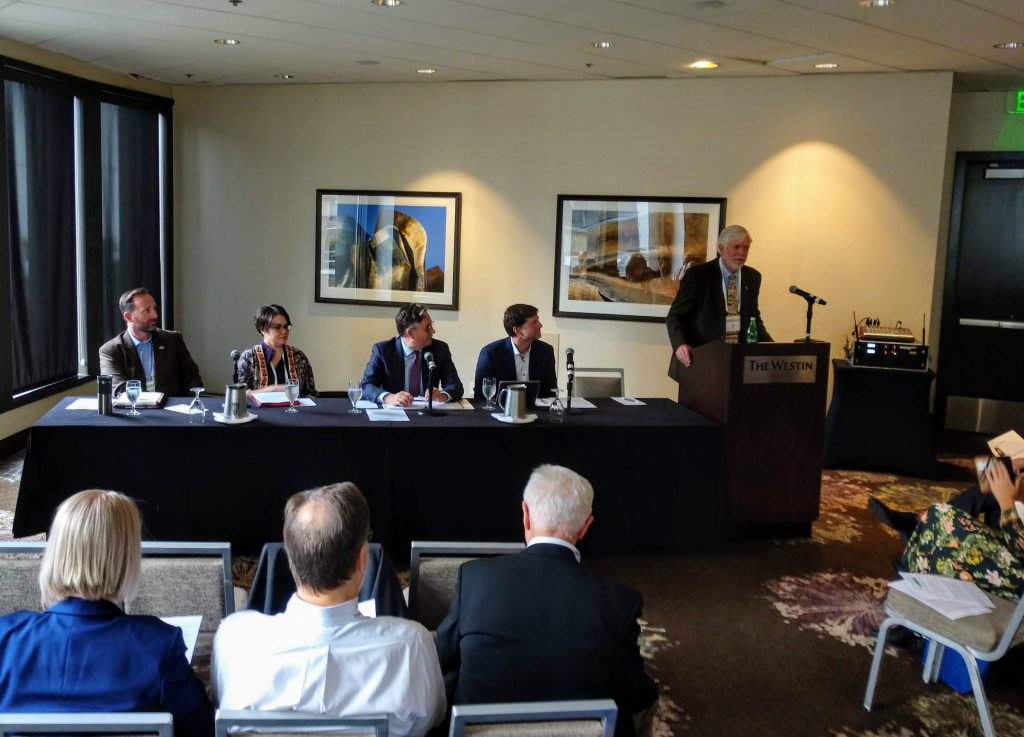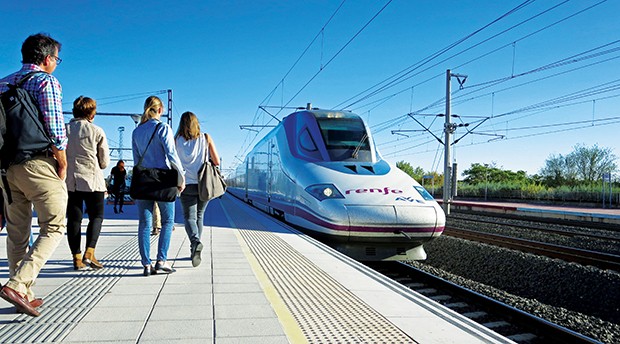There are many ways a high-speed rail system can benefit the urban hubs of a megaregion, but small towns along the alignment can also benefit and grow economically. According to Representative Seth Moulton (D-Massachusetts), who authored a white paper on American High-Speed Rail, “Economic development is not limited to the major city pairs that will likely serve as terminals in initial high-speed passenger rail corridors across megaregions: intermediate communities with access to HSR service will also benefit, perhaps even more dramatically.”
Major cities and small towns within in a clustered network are characterized as a megaregion; the Pacific Northwest megaregion stretches from Eugene, Oregon all the way up to Vancouver, British Columbia, encompassing Portland and Seattle as well as smaller cities along the I-5 corridor such as Bellingham, Olympia, and Surrey. High-speed rail will provide a fast, affordable, and sustainable mode of transportation between larger cities and for commuters in smaller towns–optimizing travel times, boosting innovation opportunities, and providing economic growth to all cities in the region.
Live Where You Want
In his proposal for American High-Speed Rail, Rep. Seth Moulton explains that the mobility that comes with high-speed rail, “opens new housing markets to workers, reduces the cost of living, and shares economic growth with nonurban areas.”
Building high-speed rail in the Pacific Northwest will ease highway congestion, cutting travel times between city centers and suburbs. For example, a commute between Seattle and Everett could be reduced from 90 minutes at peak to 15 minutes with fast trains, which would save employees 650 hours of time spent in traffic each year–that’s an extra 27 days of free time that people can spend with their families.

Residents of smaller cities like Bellingham would be able to commute to a job in Seattle in 45 minutes by high-speed rail, while living closer to nature and reducing the high cost of residing in the city. Workers from nearby metros can also benefit from fast train journeys. Families who are established in Portland may be willing to work in Seattle, but not be willing to move house. High-speed rail would transform a three hour drive to one hour train trip between the metropolitan areas, expanding collaboration and connecting innovation hubs such as universities, nonprofits, and corporations.
Work Where You Want
The Washington State Department of Transportation (WSDOT) 2019 business case study estimates that a high-speed rail system in Cascadia would bring 200,000 skilled jobs to the region. In addition to labor needed for construction, operations, and maintenance, transit-oriented development will bring employment opportunities in other sectors. According to Rep. Moulton’s proposal, “for every direct job in the railway supply sector, 4.2 jobs are supported in other industries,” which would create positions for another 840,000 people in the Pacific Northwest.
In his blog, Brad Smith, president of Microsoft, explains why job creation is among the reasons why the tech giant has invested a total of nearly $600,000 in the WSDOT high speed rail studies: Job growth with high-speed rail is “a 4% increase over what Seattle and Vancouver can expect without the service… Thousands of these new job opportunities would be spread between Bellingham and Everett, Tacoma and Olympia, and all along the rail corridor.”

Leaders of intermediary cities show support for fast trains as well. Located 60 miles (97 km) north of Seattle with roughly 34,000 residents, Mount Vernon, Washington is an agricultural hub for sustainable food production in the Pacific Northwest. At the 2019 Cascadia Innovation Conference, Mount Vernon Mayor Jill Boudreau expressed that the growth that comes with a high-speed rail system can greatly benefit her community. With the addition of Cascadia high-speed rail, travel time would be cut in half for journeys between Mount Vernon and Seattle as well as Mount Vernon and Vancouver, B.C.
High-speed rail will offer an immense opportunity for innovation, commerce, and face-to-face collaboration. A desirable mid-way location between Seattle and Vancouver, the city of Mount Vernon’s naturally serene setting, along with our fiber optic network, will provide a prime strategic satellite location for meetings and workspaces.
Mount Vernon Mayor Jill Boudreau
As megaregions continue to grow and innovate, we must strive for inclusion of cities of all sizes while planning for success of the region as a whole. High-speed rail in the Pacific Northwest will attract a variety of talented people to the region, allowing people more options to choose where they want to live and work by creating shorter commutes and gaining access to the affordability and lifestyle that comes with small town living.

Bella Lorenz (Guest Contributor)
Bella is a student at Seattle University working toward her degree in Environmental Studies, with a specialization in urban sustainability. Growing up in Chicago, experiencing the efficiency of public and commuter rail systems made her fall in love with trains and public transportation. She brought that love to Seattle where she now studies local communities’ role in transportation planning.


